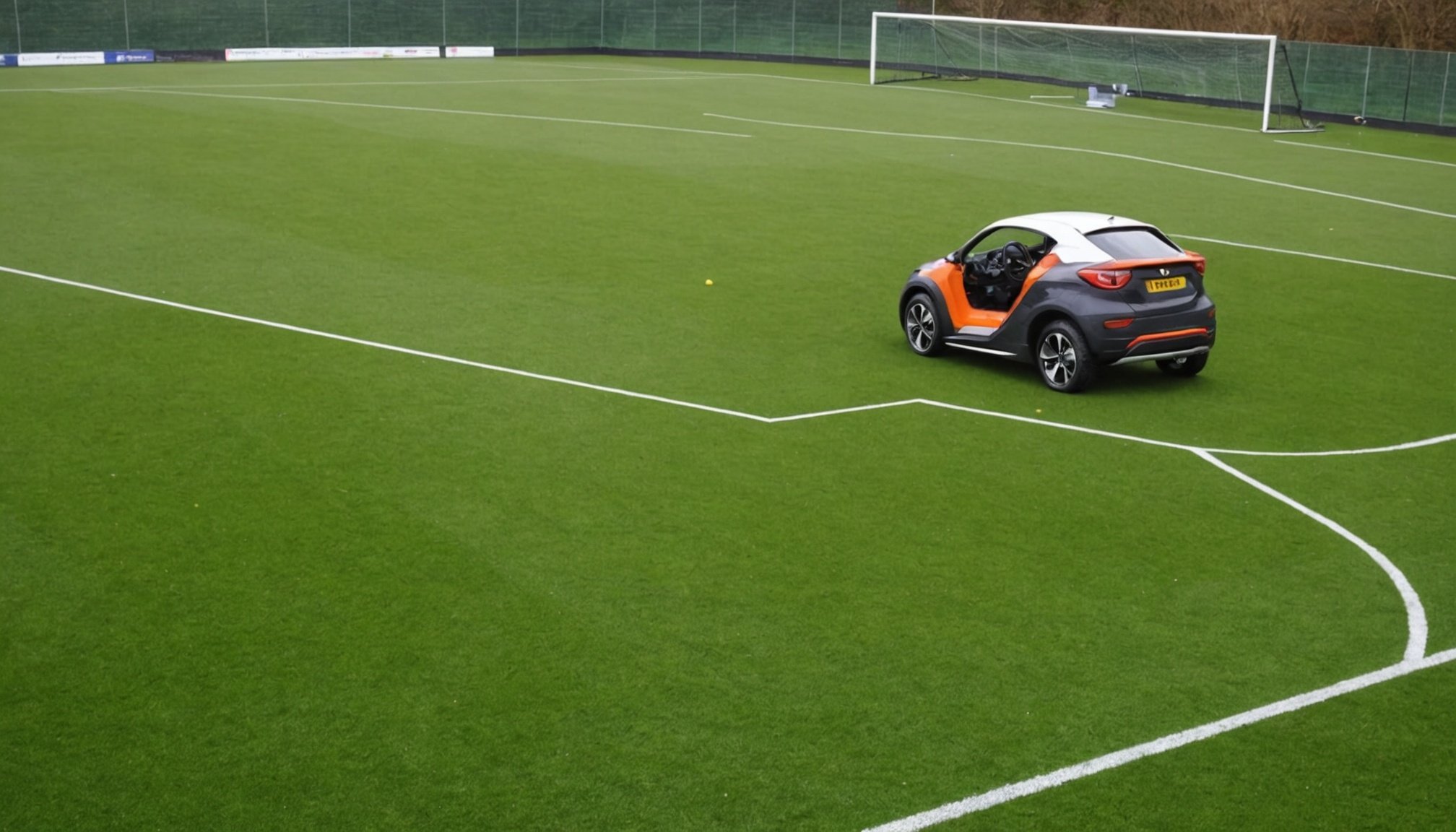Introduction to Sustainable Sports Turf Management in the UK
In the realm of UK sports facility management, implementing sustainable sports turf practices is not just an ecological necessity but also a profound commitment to environmental stewardship. By utilising ecological techniques, sports facilities can significantly reduce their environmental footprint while maintaining high-quality play surfaces.
The significance of sustainable practices in sports turf management lies in their ability to conserve resources and enhance turf resilience. Techniques such as rainwater harvesting, natural pest control, and soil health monitoring are increasingly vital. These methods not only conserve water and reduce chemical inputs but also foster a thriving ecosystem within the turf environment.
Also to see : Ultimate Guide: Top Strategies for UK Sports Clubs to Maximize Sponsorship Success
Across the UK, sports facilities are increasingly adopting sustainable practices to align with global environmental standards and improve community relations. By integrating sustainable sports turf management techniques, these facilities can showcase their commitment to ecological responsibility and operational efficiency.
Recent trends reveal a growing collaboration between turf managers and environmental scientists to innovate turf maintenance strategies. This collaboration is driving advancements in turf technology, including the use of advanced soil sensors and data analytics to optimise maintenance schedules.
Additional reading : Top Strategies for UK Sports Teams to Boost Mental Toughness and Resilience
By embracing these practices, the UK sports sector is paving the way for a greener, more sustainable future that prioritises both performance and planet.
Innovative Techniques in Sustainable Turf Management
Sustainable turf management is witnessing profound advancements with several innovative turf techniques coming to the forefront. Among these are cutting-edge technologies that are reshaping how turf is maintained, aiming for efficiency and environmental friendliness.
A significant breakthrough in this sector is the use of precision agriculture, which involves the integration of technology like GPS and sensors to manage turf more precisely. This approach enables turf managers to apply water, fertilizers, and pesticides in the exact amounts needed, avoiding overuse and minimizing negative environmental impacts. This results in significant resource conservation while enhancing turf health.
Furthermore, there is a growing trend towards sustainable practices like organic fertilizers and natural pest control methods. Organic fertilizers enrich the soil with fewer chemicals, promoting healthier, more resilient turf. Natural pest control involves using biological organisms to manage pests, further reducing the need for synthetic pesticides. This shift not only protects the environment but also ensures that the turf remains safe for recreational use.
Innovative turf techniques, leveraging alternative methods and technology, are crucial for fostering more sustainable management practices in the field, creating greener and more eco-friendly landscapes.
Case Studies: Successful Implementation in the UK
Exploring UK turf management case studies showcases the advancements in sustainable implementation. Institutions and organizations are paving the way towards greener and efficient management practices.
Example 1: Major Sports Facility Transformation
One notable success story is a major sports facility in the UK that underwent a remarkable transformation. Before the implementation of sustainable techniques, the facility struggled with inefficient water use and poor quality turf. To address these issues, a combination of advanced irrigation systems and native grass species was introduced. The outcome was a lush, resilient turf requiring fewer resources. This transformation not only improved the aesthetic and functionality of the facility but also positively impacted the local environment by reducing water consumption and enhancing biodiversity.
Example 2: Local Football Club Initiatives
Local football clubs are playing a crucial role in sustainable turf management. By adopting techniques such as organic fertilisation and precision mowing, clubs have overcome challenges like long-term cost and resource limitations. These initiatives have demonstrated that even small-scale organizations can make significant environmental improvements. Other clubs can learn from these efforts by focusing on affordable, incremental changes that offer tangible benefits over time.
Example 3: Innovative Educational Programs
Innovative educational programs are vital for teaching sustainable practices. Collaborations between schools and community organizations offer comprehensive manuals and workshops, ensuring future turf managers are well-versed in eco-friendly practices. Such programs promise long-term benefits by preparing the next generation to lead in sustainability.
Expert Insights on Sustainable Practices
Exploring sustainable practices in turf management involves learning from expert opinions. Interviews with leading experts in the field illuminate critical insights. Turf management experts have identified that transitioning to sustainable practices requires a clear understanding of current methods and a commitment to change.
One recommendation from these experts is the integration of eco-friendly solutions. They suggest adopting practices that reduce water consumption and chemical use, thereby decreasing the environmental footprint. Sustainability insights reveal that choosing drought-resistant grasses and monitoring soil health are game-changers.
Continually educating oneself is paramount in this transition. As practices evolve, ongoing learning helps turf managers stay abreast of the latest innovations. Experts highlight that participating in workshops, reading recent publications, and networking with peers can significantly enhance one’s knowledge.
Another crucial aspect is adopting technology efficiently. Digital tools can aid in precise water management, reducing waste, and enhancing resource allocation. Experts believe that technology, coupled with traditional methods, creates a robust framework for sustainability.
In conclusion, leveraging expert opinions and actively engaging with emerging sustainability insights can equip turf managers with the knowledge needed for a sustainable transition. Understanding these dynamics helps turf managers tackle challenges pragmatically, ultimately leading to responsible management practices.
Practical Tips for Implementation
Transitioning to sustainable turf management doesn’t have to be daunting. By adopting strategic turf management tips, facilities can seamlessly integrate sustainable techniques into their practices.
Step-by-Step Guide
Implementing sustainable methods requires a careful approach. Start by assessing current operations and identifying areas for improvement. Develop a clear plan with key steps such as:
- Conducting soil health assessments
- Selecting eco-friendly grass species
- Implementing a water conservation system
Compile resources needed like specialized equipment and expert consultations. Set a realistic timeline for making changes, typically spanning across several months, allowing time for gradual adaptation.
Cost Analysis and Budgeting
One major concern is the balance between initial investment and the long-term savings. While there might be upfront costs involved in adopting sustainable techniques, these are often offset by reduced maintenance and resource use over time. Explore funding opportunities and grants that support eco-friendly initiatives. Embrace cost-effective practices like using organic fertilizers, which can be especially beneficial for smaller facilities.
Community Engagement Strategies
Building a supportive community is crucial. Engage stakeholders and educate the public about the advantages of sustainable turf. Facilitate understanding by organizing events such as workshops or talks. This emphasis on community engagement not only fosters support but also informs turf users of the broader environmental benefits.
Visual Aids and Resources
Visual resources like infographics and educational materials play a significant role in enhancing the understanding of various techniques, offering clear and concise information at a glance. Infographics, for instance, distill complex information into visual formats, making it easier to grasp concepts related to sustainable turf management. These tools can show the benefits of diverse techniques or illustrate the processes involved in the cultivation and maintenance of turf.
Educational materials, such as tutorial videos, demonstrate best practices and serve as useful guides. These materials provide step-by-step instructions, allowing viewers to observe techniques in action, which can vastly improve comprehension and application. For sustainable turf management, the visual demonstration of techniques can illustrate the importance of reducing chemical use or implementing environmentally-friendly practices.
Many resources are available for those keen on deepening their understanding. Organizations often offer downloadable educational materials and interactive kits that delve into sustainable practices. While exploring these topics, consider visuals as an essential means to communicate complexity in a digestible format, ensuring content is accessible to learners of all levels.






